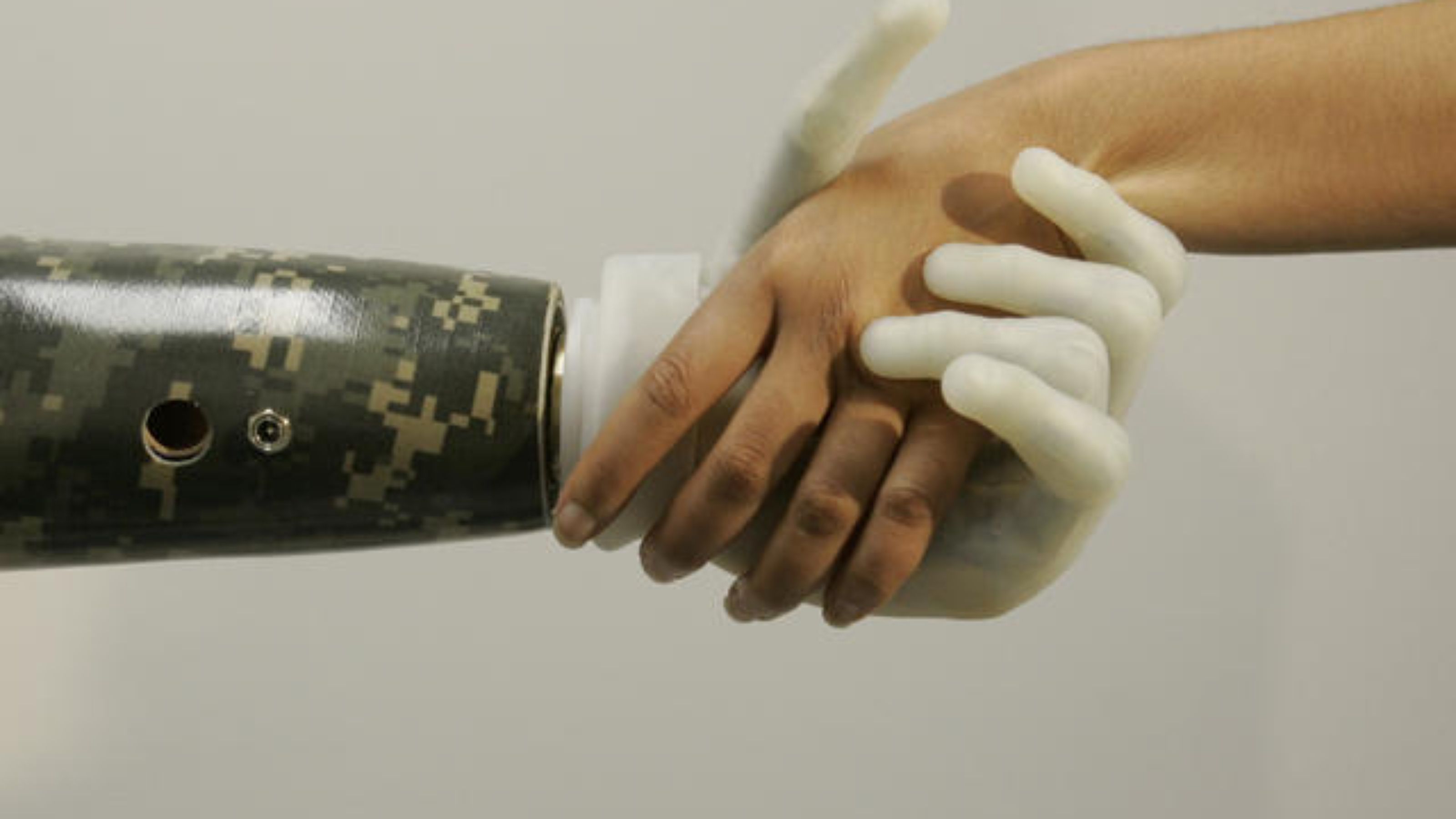Patients connected to a new prosthetic system said they ‘felt’ their hands for the first time since they lost them in accidents. In the ensuing months, they began feeling sensations that were familiar and were able to control their prosthetic hands with more — well – dexterity.
Ven before he lost his right hand to an industrial accident 4 years ago, Igor Spetic had family open his medicine bottles. Cotton balls give him goose bumps.
Now, blindfolded during an experiment, he feels his arm hairs rise when a researcher brushes the back of his prosthetic hand with a cotton ball.
Spetic, of course, can’t feel the ball. But patterns of electric signals are sent by a computer into nerves in his arm and to his brain, which tells him different. “I knew immediately it was cotton,” he said.
That’s one of several types of sensation Spetic, of Madison, Ohio, can feel with the prosthetic system being developed by Case Western Reserve University and the Louis Stokes Cleveland Veterans Affairs Medical Center.
Spetic was excited just to “feel” again, and quickly received an unexpected benefit. The phantom pain he’d suffered, which he’s described as a vice crushing his closed fist, subsided almost completely. A second patient, who had less phantom pain after losing his right hand and much of his forearm in an accident, said his, too, is nearly gone.
Despite having phantom pain, both men said that the first time they were connected to the system and received the electrical stimulation, was the first time they’d felt their hands since their accidents. In the ensuing months, they began feeling sensations that were familiar and were able to control their prosthetic hands with more — well — dexterity.
“The sense of touch is one of the ways we interact with objects around us,” said Dustin Tyler, an associate professor of biomedical engineering at Case Western Reserve and director of the research. “Our goal is not just to restore function, but to build a reconnection to the world. This is long-lasting, chronic restoration of sensation over multiple points across the hand.”
“The work reactivates areas of the brain that produce the sense of touch, said Tyler, who is also associate director of the Advanced Platform Technology Center at the Cleveland VA. “When the hand is lost, the inputs that switched on these areas were lost.”
How the system works and the results will be published online in the journal Science Translational Medicine Oct. 8.
“The sense of touch actually gets better,” said Keith Vonderhuevel, of Sidney, Ohio, who lost his hand in 2005 and had the system implanted in January 2013. “They change things on the computer to change the sensation.
“One time,” he said, “it felt like water running across the back of my hand.”
The system, which is limited to the lab at this point, uses electrical stimulation to give the sense of feeling. But there are key differences from other reported efforts.
First, the nerves that used to relay the sense of touch to the brain are stimulated by contact points on cuffs that encircle major nerve bundles in the arm, not by electrodes inserted through the protective nerve membranes.
Surgeons Michael W Keith, MD and J. Robert Anderson, MD, from Case Western Reserve School of Medicine and Cleveland VA, implanted three electrode cuffs in Spetic’s forearm, enabling him to feel 19 distinct points; and two cuffs in Vonderhuevel’s upper arm, enabling him to feel 16 distinct locations.







